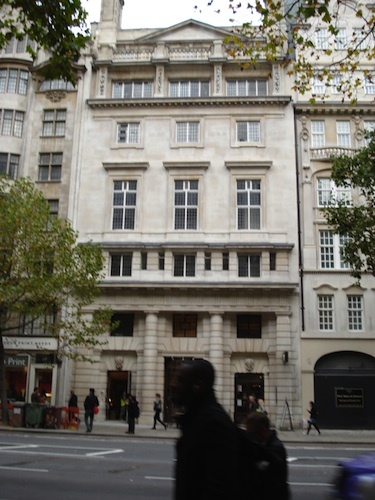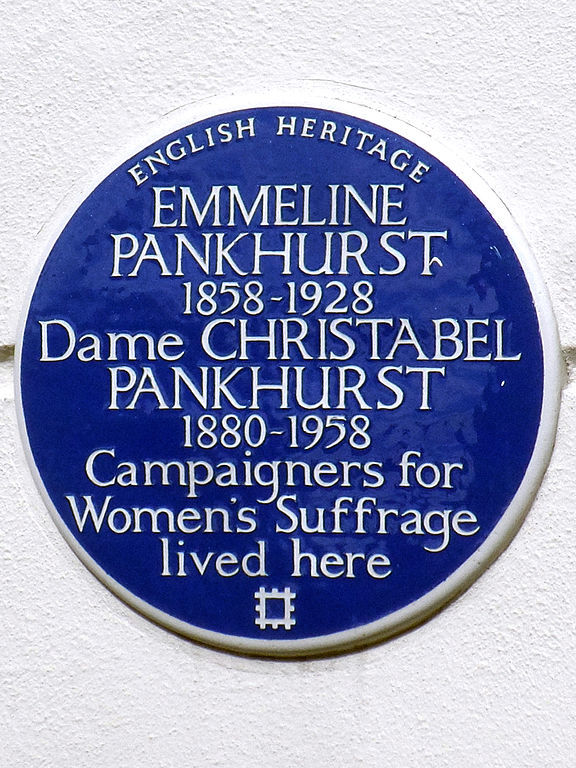
In our world of voter apathy, the suffragettes can seem pretty alien.
With hindsight, some of their actions might be dismissed as futile acts of vandalism: we now know it took the sweeping social change of a world war to really make a difference to women's suffrage.
But their story is also part of London's story; the suffragettes’ short but idiosyncratic chapter of history makes up part of the city’s fabric.
And if you’re curious, there are several threads of the colourful story that can be pursued across town.
Suffragettes' London
In 1906, the Women's Social and Political Union (WSPU) relocated its headquarters from Manchester to London.
It was a turning point in the suffrage movement.
Founded by Emmeline Pankhurst and her daughters, the WSPU aimed to promote women's suffrage through 'Deeds not Words'.
For the next eight years, their fight became a highly public and, at times, violent struggle.
With their new HQ at 4 Clement's Inn, Strand (now replaced by the LSE Towers), the WSPU were closer to Westminster.

From 1906 onwards, the lobbying and heckling of MPs became more frequent.

The WSPU set up a Women’s Parliament in Caxton Hall at 10 Caxton Street in 1907 (now apartments and offices).
By 1911, the women were breaking windows (including those of shops on Oxford Street, Regent Street and Strand) and setting fire to post boxes in the City and the West End.

From 1912, their Headquarters were at Lincoln's Inn House, Kingsway. There’s a fantastic description of the extent of their destruction in London in Andrew Rosen’s book, Rise Up, Women!
On the last day of January 1913, the WSPU began a concerted campaign of destruction... Within the next three weeks, a jewel case was smashed at the Tower, telegraph and telephone wires linking London and Glasgow were cut, an orchid house was burned at Kew Gardens, [and] the refreshment house at Regent's Park was destroyed by fire.
In 1914, after five paintings in the National Gallery and one at the Royal Academy were damaged, as well as a glass case being smashed at the British Museum, the National Gallery, Tate Britain, and the Wallace Collection were all temporarily closed.
The British Museum announced it would only admit women "on receipt of a letter from a person 'willing to be responsible for their behaviour'."
Holloway Prison
As the suffragettes’ lawlessness increased, many were sent to Holloway Prison in Islington.
When she was imprisoned for defacing St Stephen’s Hall in 1909, Marion Wallace Dunlop began a hunger strike in protest.
It soon became standard practice among suffragettes, and led to the contentious force-feeding of prisoners, and later the so-called Cat And Mouse Act of 1913.
London Memorials to Suffragettes
You can hunt out memorials to the suffragettes in London today.

Emmeline Pankhurst is buried in Brompton Cemetery, above is a picture of her grave; she was also commemorated two years after her death with a statue in Victoria Tower Gardens.

In the 1970s, a sculpture to the suffragette movement as a whole was erected in Christchurch Gardens near Caxton Hall.

London Remembers lists more than a dozen memorials, including the Minnie Lansbury clock on Bow Road, and Christabel Pankhurst at LSE.


There's also a People's Plaque to Edith Garrud in Islington — Garrud was the formidable 4ft 11in ju jitsuing suffragette who trained her fellow campaigners in the martial art in order to avoid arrest.






